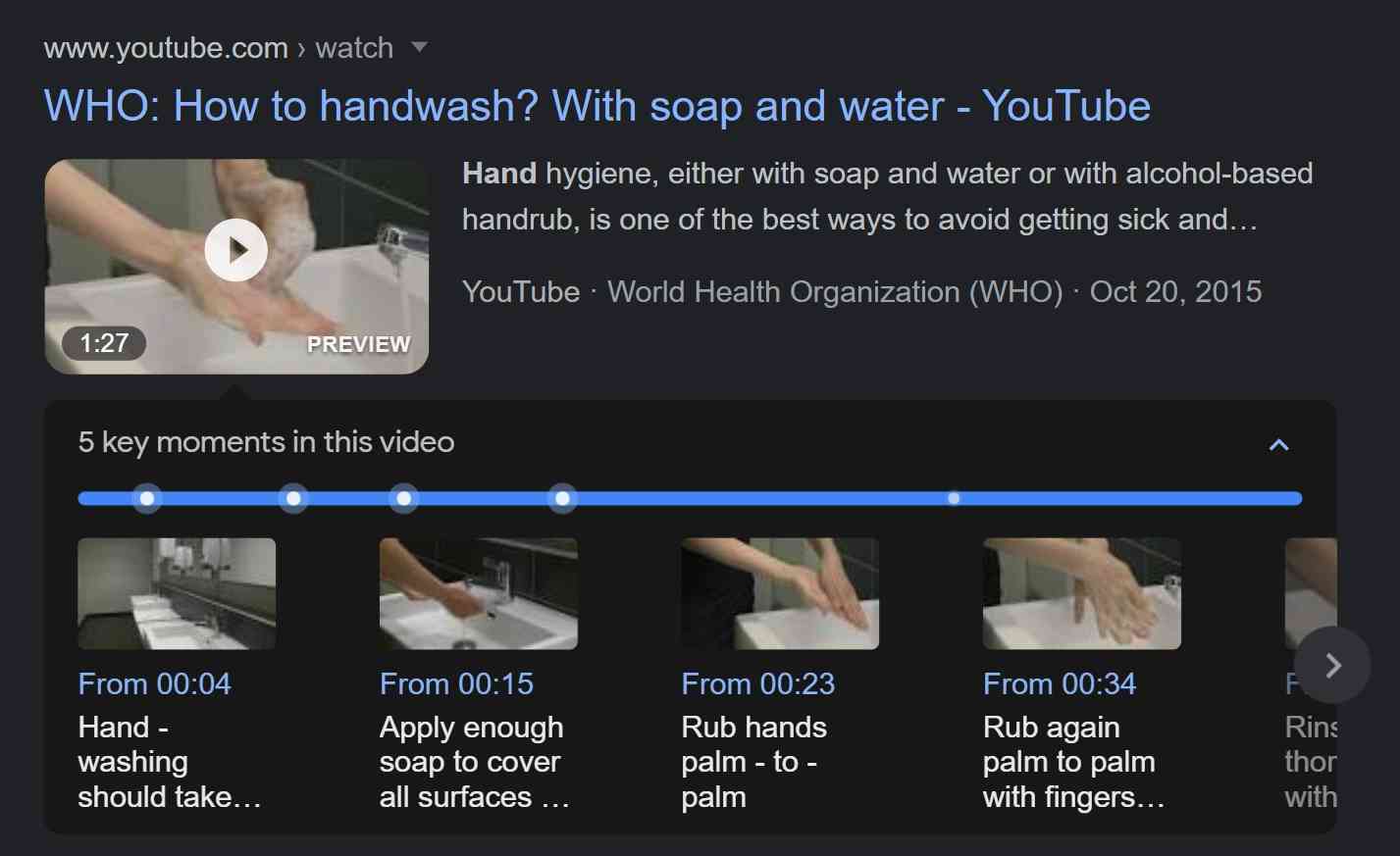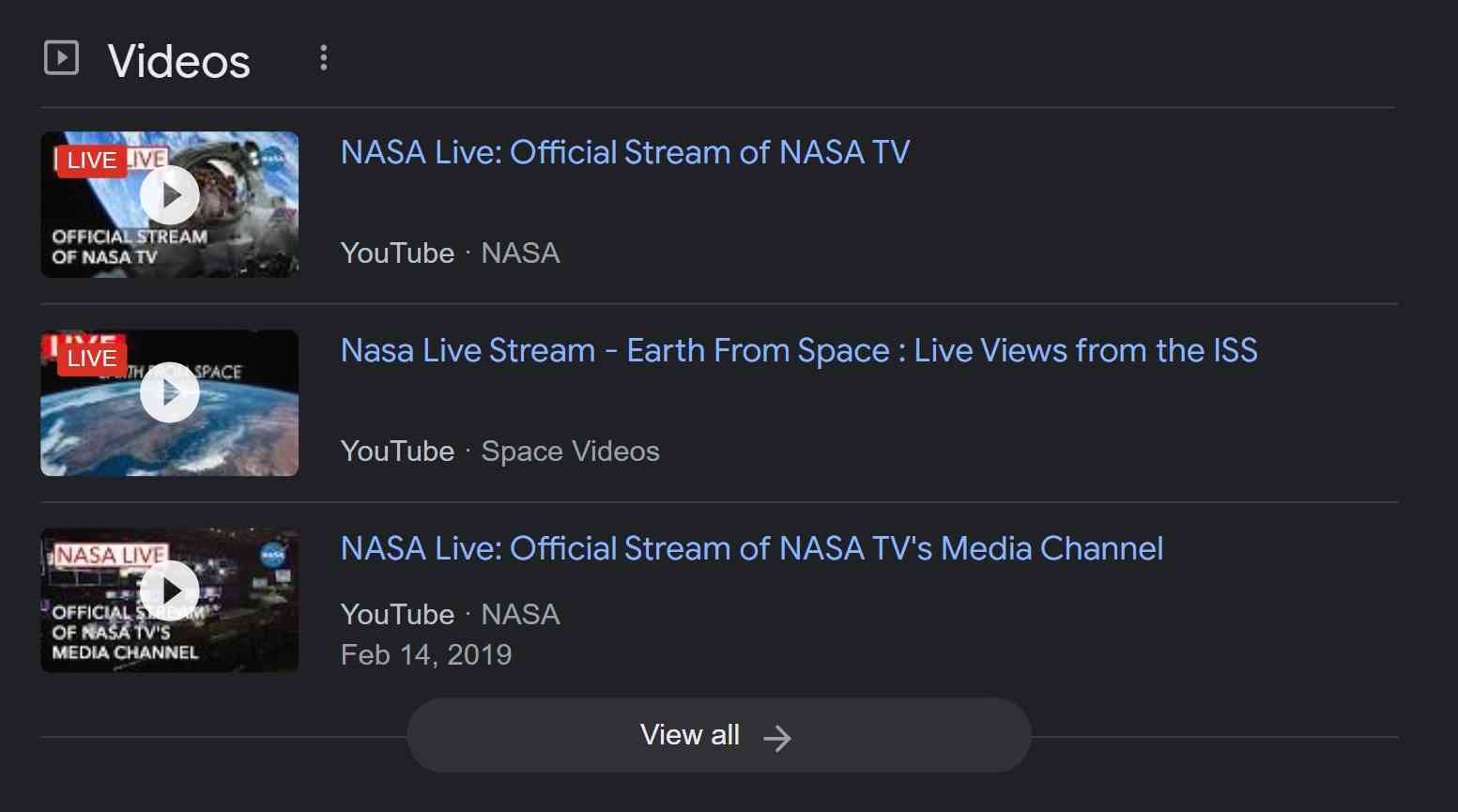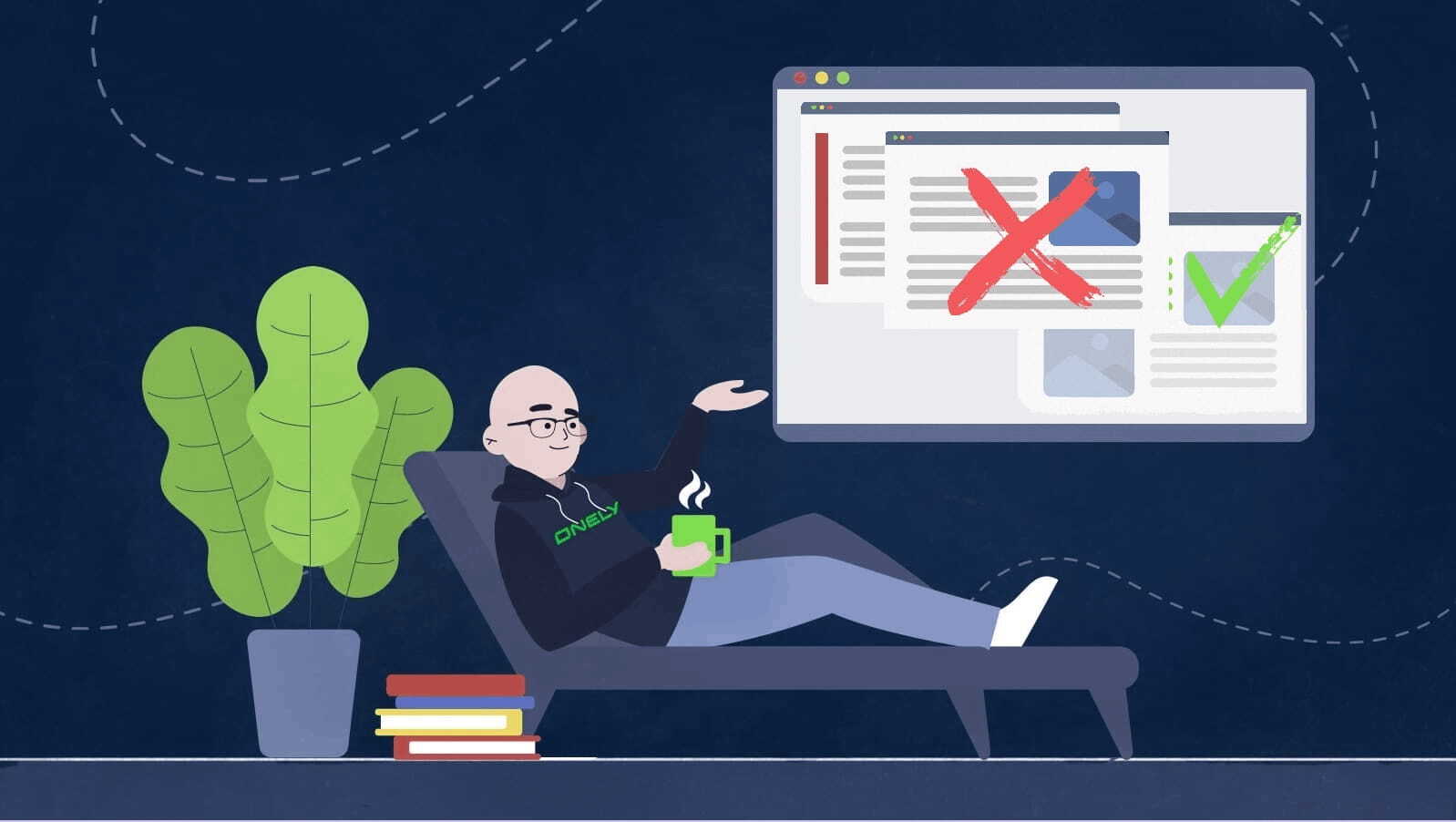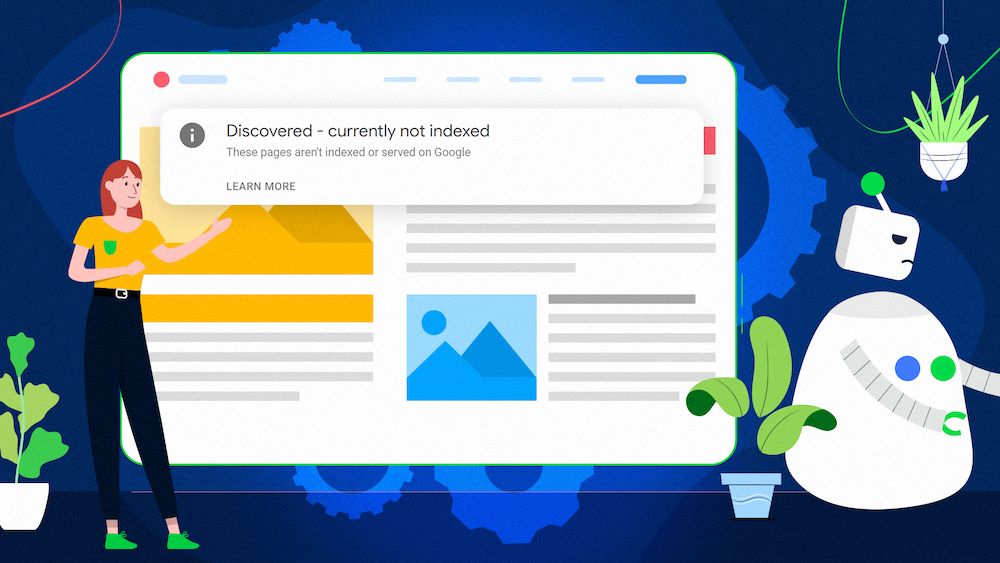Any content that appears in Google’s search results must be indexed beforehand. As part of this process, Googlebot crawls your pages and collects data about their content, which is then stored in a colossal database – the index.
While search engine bots are very good at crawling and understanding HTML files, other formats were always a little more difficult for them. It’s no different in the case of videos, so web admins often put a bit of extra work into helping Google index their multimedia content like:
- Providing structured data,
- Writing a detailed description of the video,
- Uploading a transcript,
- Adding chapters to the video, etc.
Recently Google launched a new tool for monitoring how many videos on your website are indexed and diagnosing what problems may have occurred with them.
This means you’ll finally have the opportunity to check if Google has any issues processing and indexing videos on your site and possibly debug those issues.
As we’re all waiting for the Video indexing report to be fully rolled out, let’s talk about why this topic may matter for your SEO strategy.
Google’s new Video indexing report
On Monday, July 11, Google announced the first rollout of a new Google Search Console feature – the Video indexing report. The tool is designed to help you with tracking your video indexing performance in Google by providing information about:
- The number of indexed pages on which Google found and indexed a video (“video indexed” status),
- The number of indexed pages on which Google found a video but, for some reason, wasn’t able to index it (“no video indexed” status).
Notably, the report will also show you what obstacles Google encountered when indexing your videos, so you’ll be able to fix them quickly.
Along with the Video indexing report, an enhancement for the URL inspection tool will be available. With its help, you’ll know the detailed data on individual videos, including:
- The video’s URL found by Google,
- The URL of a thumbnail – Google can either index a thumbnail image provided by you or extract a relevant frame from the video,
- Information about video placement, thanks to which you’ll know if Google sees your video as the page’s main content or if it detected other meaningful content on the page and considers the video supplementary.
The Video indexing report is rolling out as we speak, so you may not be able to find it in your Google Search Console just yet. You may look for the report in the left navigation bar in the Coverage (Page indexing) section.
Why does video indexing matter?
Judging by the many articles and comments that appeared on this subject, the SEO industry received the news with interest and even enthusiasm. That’s no surprise since video content is time-consuming and hard to produce, and it’s nice to gain some inside on how efficient it is in generating traffic from Google Search.
New features of Google Search Console will help you examine if your videos are optimized for Google. But why should you actually care?
Users watch more video content than ever
The habits and preferences of modern Internet users are changing a lot. Our attention spans are shortening, and videos turn easier to digest than long-form articles. With so much video content available (500 hours of video are uploaded to YouTube every minute), we also increasingly look towards videos when looking for answers on the web.
Let’s look at some data to back these claims up.
According to a survey conducted by Wyzowl in December 2021:
- 73% of the surveyed consumers said they’d prefer to watch a short video when learning about a product or service.
- Respondents were twice as likely to share video content with their friends than any other type of content.
- In 2021 respondents spent on average 2.5 hours per day watching online videos.
Google also got interested in the habits and expectations of users regarding videos. In 2019 they conducted a research study in association with Omnicom Media Group to check if people watch online videos just for entertainment or maybe for other purposes.
It turned out that users treat videos as a chance to reflect and gain new perspectives about their lives, an opportunity to connect with other people, and a convenient way to learn new skills and develop their passions. In fact, as many as 50% of respondents reported they wouldn’t know how they would get through life without being able to watch videos.
So it’s pretty clear – people on the web love videos. And if you have some videos on your website that Google could potentially display in the search results, you should definitely take advantage of it.
Your videos can be visible on many Search surfaces
The second reason why you should pay attention to your videos’ indexing status is that Google can display them in many places.
First of all, videos can appear on the main search results page.
When the video is adequately marked with structured data, the result can take the form of a video rich snippet that displays a description of the video, its thumbnail, upload date, and duration. For some results, Google may even enable a video preview feature. Thanks to it, users can see a few seconds of video before clicking on it.
This is great news because users are eager to click on rich results. They like to know what to expect when visiting the page.
In addition, videos have their separate tab in Google Search.
They also often appear in Google Images so that a user who wants to see what a given product looks like can be directed to a video.
Another place where people can discover your videos is Google Discover. It’s a feed appearing on mobile users’ Google Search main page. Before they type in their query, they can check suggested articles on topics of their interest.
Google gets better at understanding videos
As we discussed, users like to watch videos, and Google allows finding them in many places. However, can you trust a search engine to understand the content of your video well and display it for relevant queries?
To answer this question, let’s check what inventions related to video indexing Google has claimed in patents and what achievements it shares in its statements.
Google’s video patents
Google has long realized that without understanding the content of a video, it’s impossible to appropriately assign the correct subject matter and keywords to that video. In the introduction to Google’s patent “Ranking video articles” filed in 2011, the document’s authors state:
In addition, they can return unreliable search results since there is relatively little data to rank or score search results according to the content of the graphics or video files.
The patent claimed an invention capable of ranking videos on the basis of characteristics of their content. It’s now expired, but it shows that Google has been working on understanding videos and indexing the decoded information for over ten years.
In March 2018, Google filed a patent entitled “Relevance-based image selection.” In the introduction, the document’s authors claimed that they created their invention to solve two problems:
- First, videos uploaded to the Internet often don’t have enough metadata describing them. Especially with long videos, the metadata usually ignores many scenes that could answer the user’s query but are not properly tagged.
- Second, search engines don’t always present a suitable thumbnail for the video to convince the user that the video can provide an answer to their question.
The solution proposed in the patent is based on machine learning algorithms, thanks to which it is possible to assign text keywords to individual video frames. The index collecting this data is able to match specific scenes in the video to the user’s query.
Moreover, it can present the search result to the user in such a way that they believe clicking on the video won’t be a waste of time.
Key Moments feature
The Key Moments feature can be considered as evidence that Google is using the 2018 patent. This search feature was launched in 2019 and is intended to help the user jump straight to the specific part of the video that is most relevant to their query.
The user can expand the video rich snippet visible among the search results and then select an interesting moment of video in the timeline.

Initially, people who wanted their videos to appear in Google Search in this form had to appropriately label each segment. However, in July 2021, Google announced that it could now identify key moments in videos independently using its AI. On the side of website owners, the only thing left to do is to mark up their videos with SeekToAction markup.
The knowledge that Google understands your videos well enough to designate sections and divide them thematically may affect how you approach video creation. You should ensure that the key phrases you want to rank for appear in your script or in the captions illustrating your talking points.
LIVE badge
Finally, as proof that Google understands how important videos are for today’s users, I would like to show you a LIVE badge used to mark live streams in Google Search. Thanks to this badge, users can quickly find broadcasts of sports games and award shows or streams of their favorite video games.
This is an example of what a LIVE badge looks like:

For such a label to appear on your videos’ thumbnails, you need to use appropriate markup. As fast indexing is extremely important for live streams, Google lets creators notify it directly via the Indexing API.
How to get your video indexed by Google?
There is no guarantee that your page or video file will be indexed. Google itself admits that many web pages aren’t included in its index, although Googlebot processed some of them. Sometimes this is due to the fight against the growth of online spam; sometimes, it happens simply because no search engine is perfect.
All the more, it’s worth helping Google index your videos.
Before your video finds its way to Google’s index, bots must recognize the file and understand what it’s about. There are a few hints you can prepare for them.
Help Google discover your videos
For the content of any type to be indexed by Googlebot, it must first be discovered. Crawlers discover new URLs thanks to links from pages they’re visiting, so make sure you have a consistent internal linking structure on your website.
Google recommends creating a dedicated page for every single video, as it may be difficult to index two files on the same page. It’s also beneficial to make the video the focus of the page. It should be visible and easy to find without requiring complex user actions to load.
Remember that Googlebot can’t index your videos if they’re blocked in robots.txt or by the noindex robots meta tag.
It’s also crucial to embed your videos in suitable HTML tags like <video>, <embed>, <iframe>, or <object>.
Submit a video sitemap
A helpful tool to increase the crawlability of your website is a sitemap – a list of all pages within your domain that you would like to be indexed. By submitting a sitemap in Google Search Console, you assist Googlebot in finding your URLs. Thanks to it, crawlers can discover the most important pages faster.
A video sitemap works similarly but contains additional information about the videos you host on your website. The good news is that you can either prepare a new sitemap just for videos or add video sitemap tags to an existing one.
Provide structured data
Structured data is supplementary information that you can add to your website’s HTML code, so Google has an easier job understanding the content. You can use structured data to show the search engine:
- which of the page elements is the title of the video,
- which of the page elements is its description,
- where the date of uploading the video is indicated,
- how long the video is, etc.
Another example of structured data we already discussed is SeekToAction markup, which informs Google that you want it to process your video and define Key Moments.
Make sure your videos can be fetched
The process of fetching is necessary for Google to understand the contents of your video and enable features like:
- Video previews that show users a few selected seconds of your video on search results.
- Key Moments that allow users to start watching your video from a chosen section of their interests.
If you are interested in having your videos appear in search results this way, make sure that:
- The server hosting the video has enough bandwidth to allow Googlebot to successfully crawl your videos.
- You’re using contentURL markup to show Googlebot the exact location of video files.
- Each video has a unique and stable URL.
Key takeaways
- Google launched the Video indexing report – a new GSC tool to track your videos’ indexing performance and diagnose problems that may occur during the process. The change will be rolled out gradually and available in the left navigation bar in the Coverage (Page indexing) section.
- Users watch more videos every year and appreciate this type of content. If you have videos on your website, make sure that they are indexed and can appear on Google Search.
- Your videos can be visible on the main Google search results page, Google Images, Google Discover, and among other video results.
- Using machine learning algorithms, Google can assign key phrases to individual frames of your video and present the timeline with its Key Moments, thanks to which the user can start watching from the section of their interest.
- The chances of your video indexing are increased when:
- You let Googlebot discover your videos by providing clear internal linking and submitting a video sitemap,
- You use HTML tags and schema markup to signal that there is a video on the page,
- Your video is available for Google to fetch,
- Your video file has a stable URL.
Need some help with video indexing? Explore our technical SEO services, and book a discovery call with Onely’s experts today!

Hi! I’m Bartosz, founder and Head of SEO @ Onely. Thank you for trusting us with your valuable time and I hope that you found the answers to your questions in this blogpost.
In case you are still wondering how to exactly move forward with fixing your website Technical SEO – check out our services page and schedule a free discovery call where we will do all the heavylifting for you.
Hope to talk to you soon!








